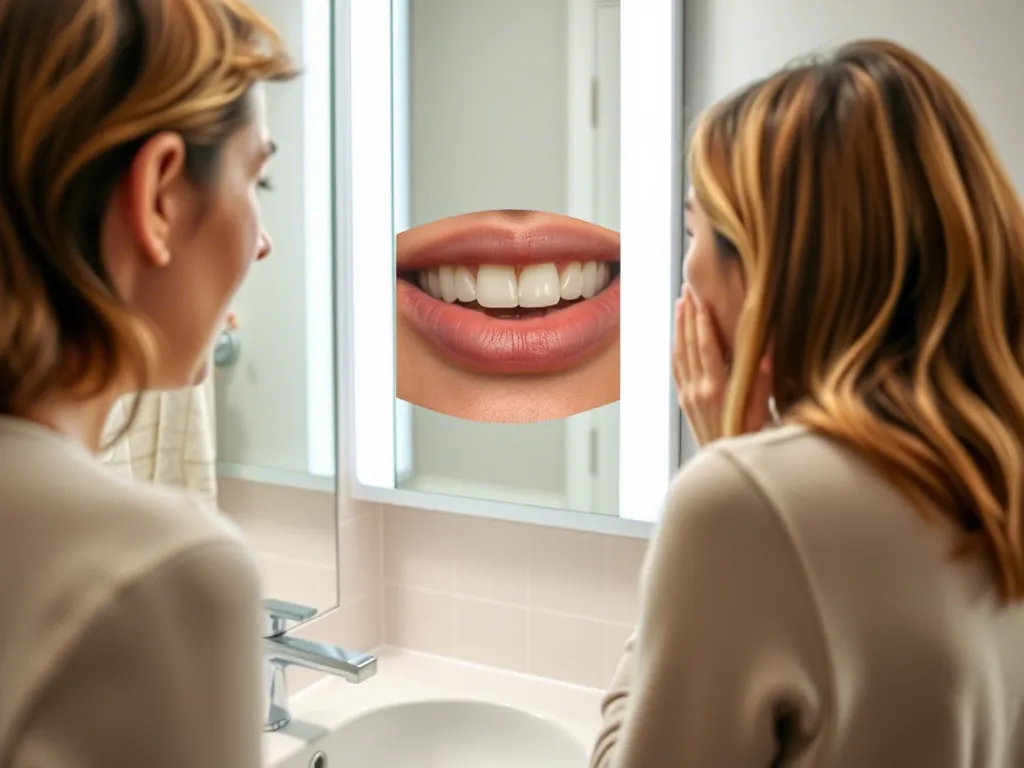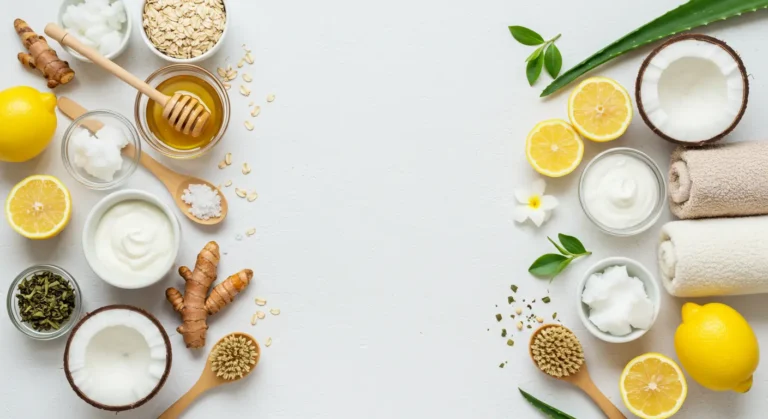Gum disease might start as a minor irritation, but if left untreated, it can turn into a serious problem. It begins as gingivitis, where gums become red, swollen, and prone to bleeding. If ignored, it can advance to periodontitis, a more severe condition that damages the tissues and bones supporting your teeth.
So, can gum disease really be cured without a dentist? The short answer is: mild cases can often be reversed with home remedies, but advanced periodontitis requires professional treatment. While natural methods can help reduce inflammation, fight bacteria, and slow disease progression, deeper infections and bone loss cannot be reversed without a dental professional.
This guide covers scientifically backed home remedies that support gum healing, reduce bacterial growth, and strengthen oral health. These solutions work best for early-stage gum disease or as preventative care to keep your gums strong and resilient.
What Causes Gum Disease?
The main culprit behind gum disease is plaque buildup; a sticky film of bacteria and food particles that clings to teeth and gums. If not removed, plaque hardens into tartar, which leads to inflammation, infection, and potential tooth loss.

Several factors can accelerate gum disease:
- Poor oral hygiene: Inconsistent brushing and flossing allow bacteria to multiply.
- High-sugar diet: Sugary foods feed harmful microbes, increasing plaque accumulation.
- Smoking & alcohol: Tobacco use weakens the immune system, and alcohol dries the mouth, reducing saliva flow needed to neutralize bacteria.
- Hormonal changes: Pregnancy, menopause, and puberty can make gums more sensitive to bacterial buildup.
- Diabetes & other conditions: High blood sugar creates an ideal environment for bacterial overgrowth, increasing the risk of gum infections.
Early Symptoms to Watch For
Detecting gum disease early can prevent serious complications. If you notice any of the following symptoms, it’s time to take action:
- Red, swollen gums – Healthy gums should be pink, not puffy.
- Bleeding when brushing or flossing – Blood in the sink isn’t normal. It signals inflammation or infection.
- Chronic bad breath – Persistent odor often means bacteria are growing below the gumline.
- Gum recession – If your gums pull away from your teeth, it can expose roots and cause increased sensitivity.
Ignoring these warning signs allows the infection to spread, and makes treatment more complex and costly in the long run.
7 Science-Based Home Remedies for Gum Disease
The following natural treatments are backed by scientific research and are recommended for mild to moderate gum disease. These methods help reduce bacterial buildup, ease inflammation, and promote gum repair.
1. Saltwater Rinse
Saltwater has been used for centuries to clean wounds and fight infection. It works by reducing bacteria, soothing irritated tissues, and accelerating healing.
How to Use It:
- Mix 1 teaspoon of salt in a glass of warm water.
- Swish for 30 seconds, then spit it out.
- Repeat twice daily.
Scientific Evidence:
A 2017 study published in the Journal of Clinical Periodontology confirms that saltwater rinses help lower bacterial activity and reduce inflammation. [Source]
2. Hydrogen Peroxide Mouthwash (With Precautions)
Hydrogen peroxide kills harmful bacteria, prevents plaque buildup, and whitens teeth. However, overuse can irritate gum tissue, so it must be diluted properly.
Proper Usage:
- Dilute 3% hydrogen peroxide with equal parts water.
- Swish for 30 seconds and spit it out (DO NOT SWALLOW).
- Use 2-3 times per week.
Scientific Backing:
A study in The Journal of Periodontology found that hydrogen peroxide significantly reduces plaque and gingivitis symptoms. [Source]
Warning: Overuse may cause gum irritation, so always dilute it and avoid using it daily.
3. Baking Soda for Gum Health
Baking soda neutralizes acids, making the mouth less hospitable for bacteria. It also gently scrubs away plaque without damaging enamel.

How to Use It:
- Mix 1 teaspoon of baking soda with a few drops of water to form a paste.
- Gently brush your teeth and gums (2-3 times a week).
- Rinse thoroughly with water.
Scientific Evidence:
A Journal of the American Dental Association study confirms that baking soda toothpaste helps reduce plaque and improve gum health. [Source]
4. Green Tea for Reducing Inflammation
Green tea contains catechins, antioxidants that reduce inflammation and prevent bacterial overgrowth.
You Might Also Like: How to Become a Plumber in the US: Step-by-Step Career Guide
How to Use It:
- Drink 1-2 cups of green tea daily.
- Let the tea cool and use it as a mouth rinse.
Study Link:
A study in The Journal of Periodontology found that green tea drinkers had healthier gums and less bleeding. [Source]
5. Aloe Vera as a Natural Antibacterial Agent
Aloe vera has anti-inflammatory and antibacterial properties that can calm swollen gums and support healing.

How to Apply:
- Use 100% pure aloe vera gel.
- Apply directly to inflamed gums and leave for 10 minutes before rinsing.
Scientific Support:
Research in the Journal of Indian Society of Periodontology confirms aloe vera’s effectiveness against gingivitis. [Source]
6. Clove Oil for Pain Relief
Clove oil contains eugenol, a natural anesthetic and antibacterial agent.
How to Use It:
- Dip a cotton swab in clove oil and apply it gently to sore gums.
- Leave for a few minutes, then rinse.
- Use sparingly (1-2 times daily).
Caution: Excessive use may cause gum irritation.
7. Coconut Oil Pulling
Oil pulling is an ancient practice that removes toxins, reduces plaque, and supports oral health.
Method:
- Swish 1 tablespoon of coconut oil in your mouth for 15-20 minutes.
- Spit it out (don’t swallow), then rinse with warm water.
- Brush as usual.
Scientific Evidence:
A 2016 study in the Journal of Natural Science, Biology, and Medicine found that oil pulling reduces plaque and improves gum health. [Source]
The remedies listed above are clinically proven to reduce inflammation, fight bacteria, and promote healing. However, severe cases require professional dental care.
Diet and Lifestyle Changes to Prevent Gum Disease
Home remedies can help, but what you eat and how you care for your mouth play a big role in preventing gum disease from coming back. It involves taking nutrients-rich foods, avoiding harmful dietary habits, and adopting smart lifestyle habits that strengthen your gums over time.
A. Nutrient-Rich Foods for Stronger Gums
What you consume directly impacts gum resilience and oral health. Essential vitamins and minerals help combat inflammation, support bacterial balance, and repair tissue damage, which reduces the likelihood of gum disease.
- Vitamin C is a powerhouse for gum health. It boosts collagen production, which keeps gums firm and resilient, and helps prevent bleeding gums. Citrus fruits like oranges and lemons, bell peppers, strawberries, and kiwis are excellent sources.
- Calcium & Vitamin D work together to keep teeth and gums strong. Calcium fortifies the jawbone, while vitamin D helps the body absorb calcium efficiently. You’ll find these nutrients in dairy products, leafy greens, fortified plant-based milks, and natural sunlight exposure.
- Omega-3 Fatty Acids reduce gum inflammation and help combat periodontal bacteria. Studies suggest that omega-3s can even slow down the progression of gum disease. Salmon, flaxseeds, chia seeds, and walnuts are all great sources.
A well-balanced diet full of these nutrients can keep your gums healthier for the long run. It makes them less susceptible to infections and inflammation.
B. Avoid Foods That Can Harm Gum Health
Just as some foods nourish your gums, others fuel bacterial growth, which increases the risk of plaque formation and inflammation.
Just as some foods strengthen gums, others feed harmful bacteria, making gum disease worse. Cutting back on these can reduce inflammation and help your gums heal faster.
- Sugary foods & sodas create the perfect environment for plaque and tartar buildup, which leads to gum infections. Sticky candies, processed sweets, and sugary drinks should be limited or replaced with healthier alternatives.
- Excessive alcohol dries out the mouth, reducing saliva production, which is essential for washing away bacteria. A dry mouth allows plaque to form more easily, increasing the risk of gum disease.
- Smoking weakens the immune response, making it harder for gums to fight infections. It also reduces blood circulation, slowing down healing. Studies show that smokers are twice as likely to develop advanced gum disease.
- Processed carbohydrates like white bread, chips, and pastries break down into sugars that feed harmful oral bacteria, leading to increased plaque accumulation. Whole grains are a better choice for oral and overall health.
Making smart food choices is just as important as brushing; your gums will thank you for it.
C. Proper Brushing & Flossing Techniques
Brushing and flossing seem simple, but doing them incorrectly can actually damage your gums. Many people brush too hard, causing gum recession, or they don’t floss properly, missing the bacteria hiding between their teeth.
Best Toothbrush Type:
Dentists recommend using a soft-bristled toothbrush; preferably an electric toothbrush. It removes plaque more effectively without being too harsh on gums. Brushing should be gentle yet thorough, lasting at least two minutes twice a day.
The Right Way to Floss:
Flossing should clean between teeth without cutting into the gums. Instead of snapping the floss straight down, use a C-shaped motion to hug the tooth and gently clean under the gumline. Flossing once a day prevents plaque buildup in hard-to-reach areas that brushing alone can’t tackle.
A combination of proper brushing, flossing, and mouth rinses is essential for long-term gum health.
When to See a Dentist: Warning Signs You Shouldn’t Ignore
While mild gum disease can be managed at home, there are times when you must see a dentist.
Here are signs that require professional dental care:
- Persistent bad breath that doesn’t go away even with proper oral hygiene. This could indicate deep gum infections.
- Loose teeth or a feeling that your teeth are shifting. This is a major red flag for advanced periodontitis, where bone loss is occurring.
- Severe gum recession, where the gums pull away from the teeth, exposing the roots. This can lead to tooth sensitivity and decay.
- Pain and swelling that worsens, especially if chewing becomes difficult or painful. This could indicate an abscess (a deep infection that requires immediate dental treatment).
If any of these symptoms appear, you must schedule a dental visit immediately. The sooner the disease is treated, the better the chances of preventing permanent damage.
FAQs
Can gum disease be completely reversed at home?
Yes, mild gum disease (gingivitis) can be reversed with proper oral care, diet changes, and natural remedies. However, advanced gum disease (periodontitis) requires professional treatment, as it involves bone and tissue damage that cannot heal on its own.
How long does it take to see results from home treatments?
For mild gingivitis, improvements can be seen within one to two weeks of consistently using home remedies. However, it takes longer for gums to fully heal, especially if lifestyle changes (like quitting smoking or improving diet) are needed.
Are there risks to using hydrogen peroxide or baking soda too often?
Yes. While hydrogen peroxide kills bacteria, overuse can irritate gum tissues. It should be diluted and used only two to three times per week. Baking soda is great for neutralizing acids, but brushing with it too often can wear down enamel. Using it sparingly is key to balancing its benefits.
Final Takeaway
Gum disease is preventable and treatable—if caught early. Simple remedies like saltwater rinses, green tea, and hydrogen peroxide can help reduce bacteria and inflammation. However, preventing gum infections requires consistent oral care, a balanced diet, and avoiding harmful habits like smoking.
If you want healthier gums? Start today. If symptoms persist, don’t delay; get professional help to prevent permanent damage.




[…] You Might Also Like: How to Cure Gum Disease Without a Dentist? Scientifically Backed Home Remedies […]